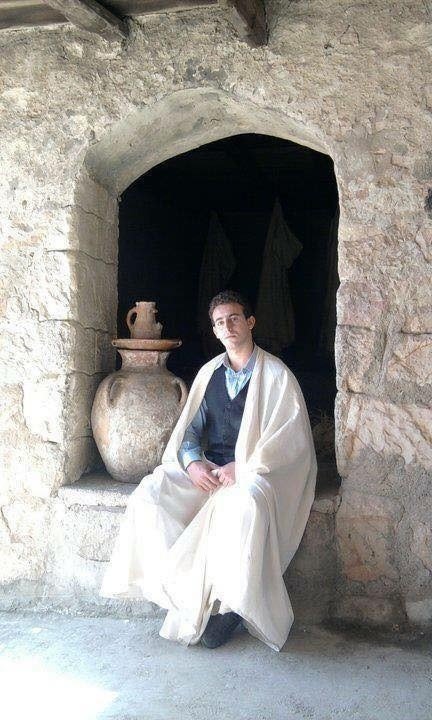514
Our kabyle ancestors distinguished themselves not only by their way of life and the regions they occupied (mountainous regions with a harsh climate), but also and above all, they knew how to distinguish themselves by their clothing. The burnous (avarnous or abidi in the Berber language) is man’s favorite ornament of all the traditions and customs inherited and which unfortunately tend to be lost gradually. It symbolizes both the originality and the pride of our ancestors since it is a sign of virility, authenticity and maturity.
This dress, which is both beautiful and simple, is worn by all men, whether rich or poor and it has a great value because it is the work and fruit of long and harassing work of our mothers and grandmothers. Almost always the new burnous is destined for the young people who are preparing for marriage. They wear the burnous the night of henna “El-Hani”(marriage), concealing their faces in the hood “Akelmoune”. Nowadays, to modernize it, a few colors are added, giving it more ancestral values those rooted in the Berber society. But the white remains the most preferred because it symbolizes the spirit of an entire region(kabylia) and identity. It is passed down from generation to generation.
The way to weave the burnous is not an easy task. Spinning has its own tools; first of all the wool is cleaned of thorns (issenanene) and dirt. After that, they use Iqardachen, the indispensable pair of frames with their thousand metallic points that untangle the wool fiber by friction in both directions and prepare it for Issogra spinning. Izzdi, is a tool that is used to assemble the thread by rolling it on the calf. In order to weave the burnous, one need Ifegaguen, the two beams lower and upper next, or Tirigliwine, the left and right uprights with Ighounam, the two reeds. Akhdor, the stick, smooth or Taoqazt-guelni , Tayazzilt, weaving comb, Tijebadine iron jaws that tend weaving in width. These are the six weaving tools
Nowadays, the Kabyle burnous is threatened “Do not give me a burnous , teach me to weave it”, the technique of weaving burnous requires a rehabilitation in the emergency before the total forgetfulness and the irremediable loss. The burnous is not a simple habit. It is the symbol of maturity, responsibility and authority. It is above all the emblem of honor. Aït Menguellet, a kabyle singer ,dedicate a song of nostalgia for this precious cloth ” Almoussiw, chdagh yeghli ovarnoussiw”(Where is my dagger, I slipped I lost my burnous ). This emphasizes the symbolic importance of burnous in the Kabyle society. After his fall, the man seeks his weapon to defend his burnous, he cares more for the protection of his emblematic suit than for himself. So we must keep the burnous close to our hearts do not let it fall to the ground. Before you disappear, transmit its values and how to weave it to your children.
Wearing a burnous is an art. There are six ways to wear this habit of symbolic value and identity that are known in the southern foothills of Djurdjura. A man who goes to the market must wear the burnous on his shoulder (avarnous ghef thayets). It is the outfit of the head of the family (imsewaq), the official habit of the ceremonies of reconciliation and conflict resolution, which enhances the social rank of his wearer. Put the burnous on the shoulders, falling on his legs (avarnous ghef thoyat) is the ordinary port of the burnous of the onlookers who wander the alleys of the village in soft weather. To dress with a burnous (yelsa avarnous) is to pass the chest in the neck the hood in the back and to reject a backwards. The burnous is often a hideout. Wrapping in his burnous (yetsel avarnous) Kabyle posture sitting in group in the village (tajmaat) is also said to bundle up in his burnous (yekmounes doug varnous). Tying the burnous (tamoukrist) is the posture of the man who does a manual task without leaving his burnous and finally the sixth way to wear this coat is to put the hood aside (aqelmoun deg diss) as a pocket is the wager of the person returning from the market where it makes light commissions not requiring large baskets. There are probably a variety of other ways to put the burnous, but is it so important at a time when a whole generation ignores its existence. Mouloud Feraoun in his famous autobiographical novel The Son of the Poor: “My father, before leaving, confided to me the burnous that his father left him. I hope to be able to pass it on to my son with all the positive values he symbolizes, so that we are us and not the others and all that we share with humanity. “
(Written by ARAB Sabrina)





